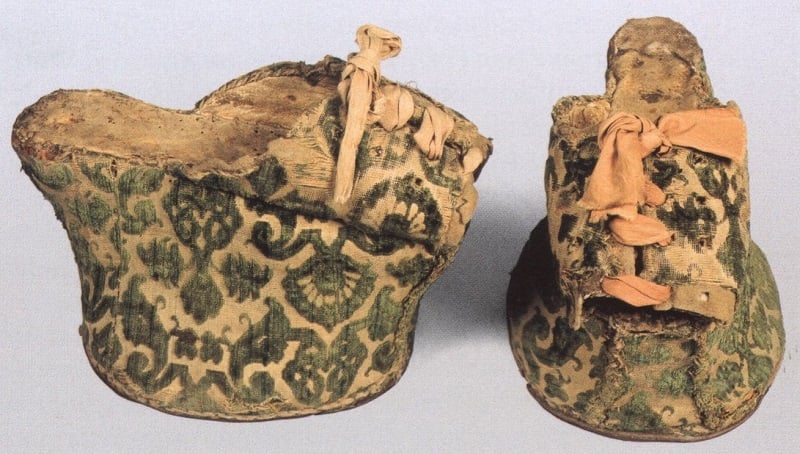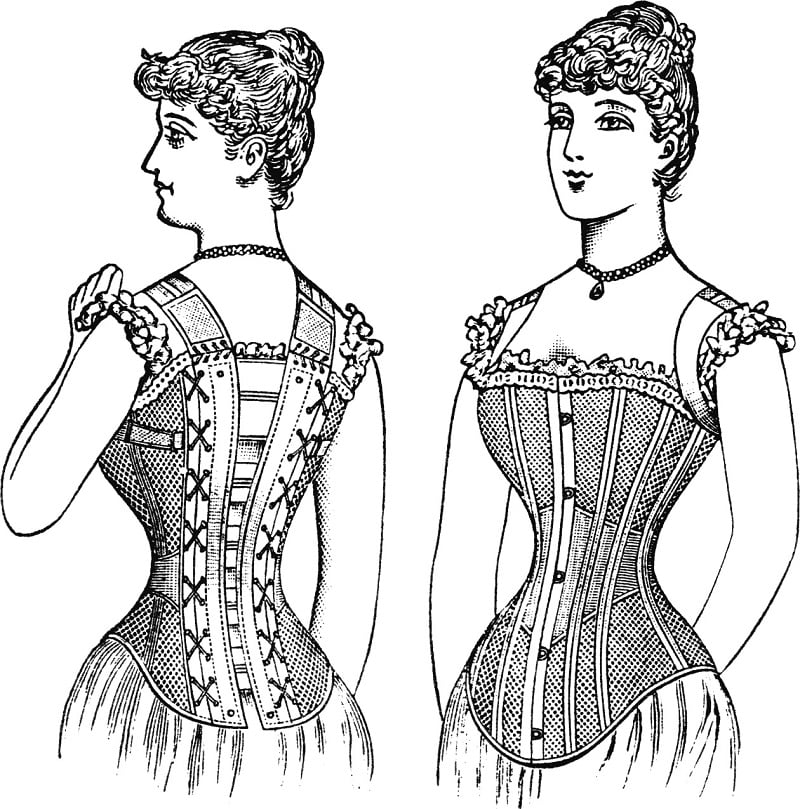
Source: The Full Wiki
Cruel Women’s Fashion No. 1: Corsets
When one thinks of uncomfortable women’s fashions throughout history, most people jump to the corset. Originally developed in ancient Greece, women wore laced body braces that were tightened about the waist in order to create the illusion of an hourglass figure. For several centuries, women pushed the limits of osteological strength, attempting to shrink their waists to an ideal 16 inches, some getting as small as 14.
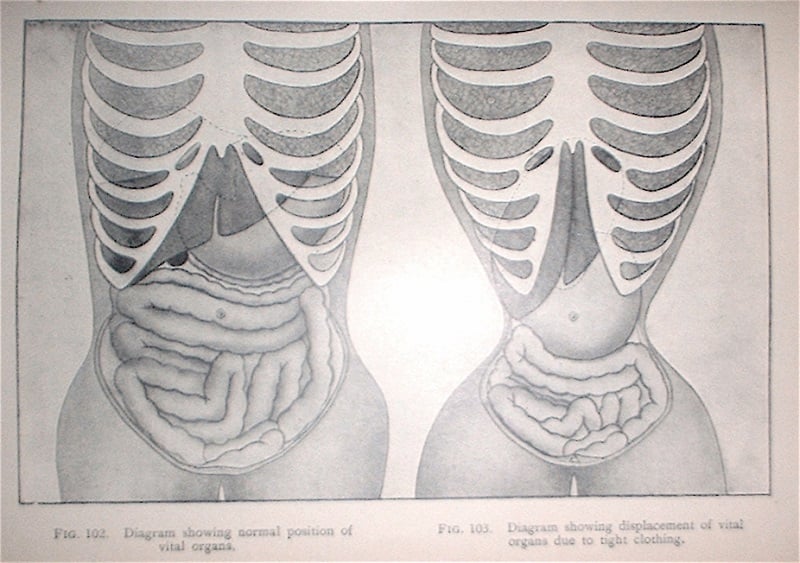
Source: Hoyden About Town
There was a serious consequence to repeated use of the corset that is as horrifying as it is obvious. If the wearer didn’t simply shatter her ribcage in the process, the woman potentially faced suffocation in the name of fashion. Also, as a corset-donning female made her corset tighter, she was basically herniating her intestines into the rest of her lower abdomen. A female impersonator even died onstage due to the unbearable stresses of the corset.
In a society that demands a physically impossible standard of beauty, it is an unfortunate reality that some will push their limits beyond the breaking point. However, in the quest for an hourglass figure, the corset may have been the safer option over the alternative.
Cruel Women’s Fashion No. 2: Panniers, Crinolines, And Various Deadly Hoop Skirts
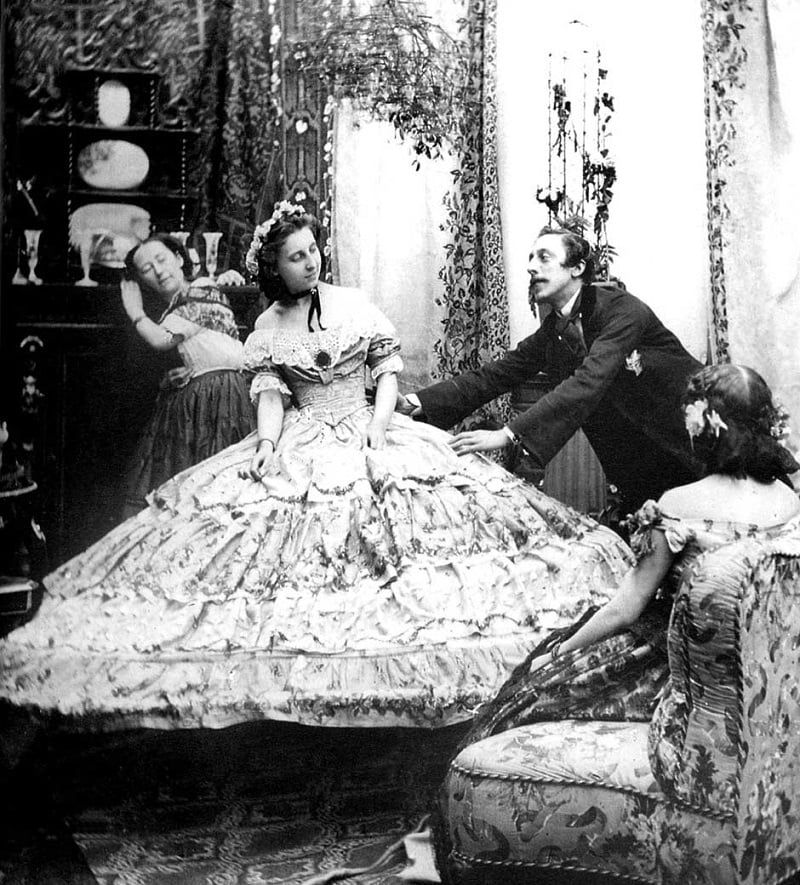
Source: Tieba Baidu
For those who identify the corset as a torture device, a somehow deadlier shortcut to an hourglass figure was available in the scaffolded hoop skirt. In hindsight, the slow death of the corset might have been favourable to the many drownings and immolations reportedly caused by the gargantuan waste umbrellas. Due to the material required, the act of making one was expensive enough. Getting into it was no easy task, either.

Source: Questionable Advice
Their hips exaggerated, women sporting the wooden skirts had a tendency to knock over candles and gas lamps, lighting their garments ablaze. Others were swept off piers by strong gusts, inevitably drowning under the weight of their steel-rung, highly absorbent dresses. In a tragically avoidable freak accident, the crinoline was responsible for the deaths thousands when the panicked attendees of a Chilean church clogged the only exit with steel-reinforced hoop-skirts. Like the corset, the hoop skirt would remain fashionable for centuries until the 1920s, when changing gender roles would popularize the straight chemise of the groundbreaking flappers.
Cruel Women’s Fashion No. 3: Fontanges
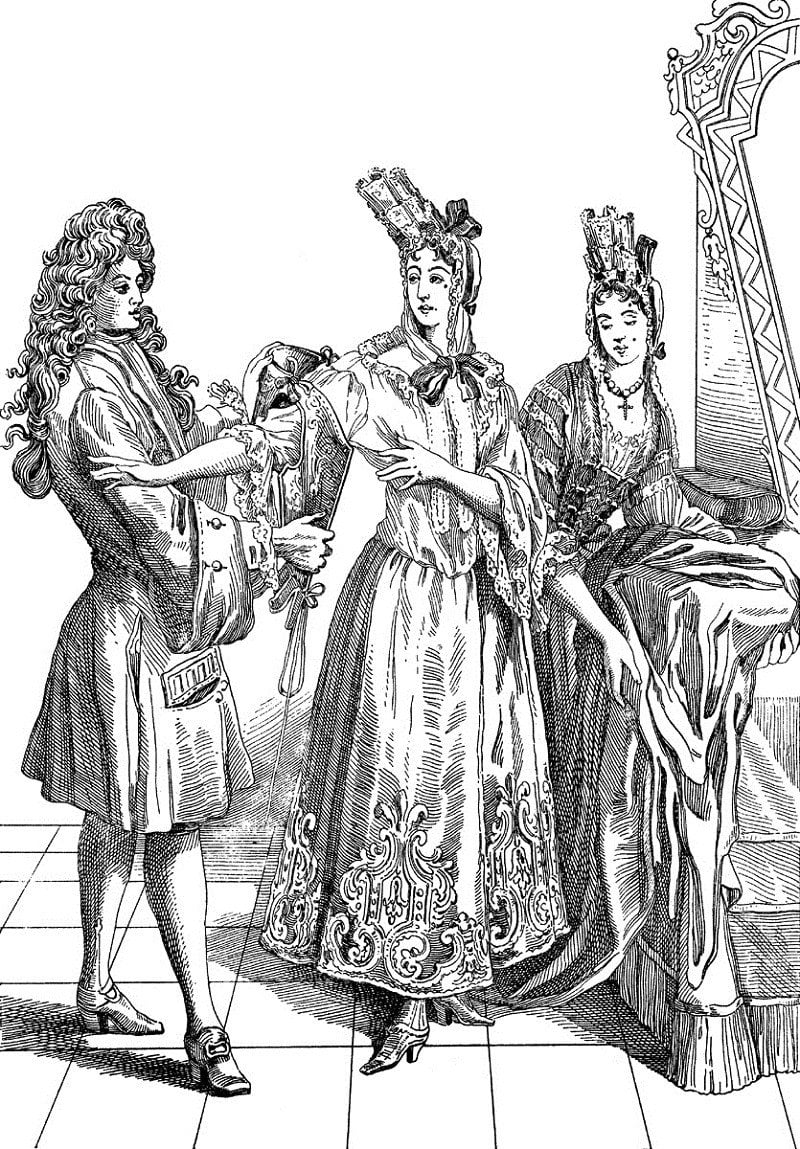
Source: Wikimedia Commons
Big hair is hardly a recent development in fashion, but the heights to which people would go in order to achieve a sufficiently voluminous coiffe have taken some ridiculous–and even fatal–turns. Originally donned by Louis XIV of France to cover his baldness, his wig-wearing sycophantic court introduced the self-conscious-induced fashion to the masses.
Because powdering and maintaining wigs were both times- and wallet-consuming activities, powdered wigs quickly became a status symbol across Europe, worn only by the richest and most important citizens. It would probably still be popular today, that is if wearing one hadn’t been a one-way ticket to the guillotine during the French Revolution.
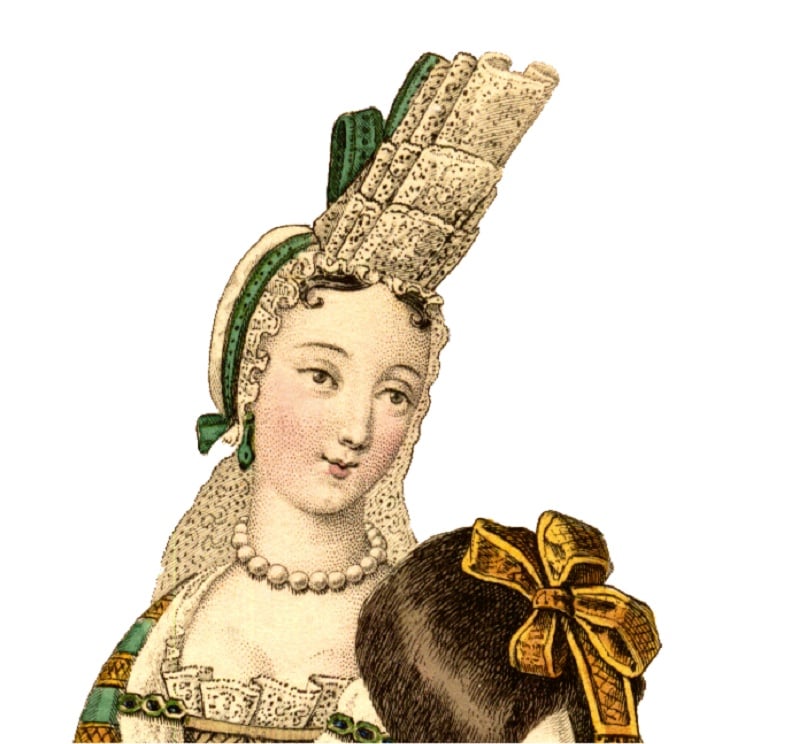
Source: Study Blue
There didn’t need to be social unrest, however, for the big wig to get anyone killed. Disgraced aristocrats and high-reaching peasants would often wash their wigs less stringently, resulting in the perfect breeding grounds for plague-carrying rats and fleas.
The female varieties of the powdered wig were usually done up and decorated with jewellery and ribbons, dubbed the wig’s fontange. Since candles were still the only form of artificial light, ladies with particularly extravagant fontanges would light their heads on fire, sometimes too proud to remove their status symbols as the fire consumed their very skulls.
Cruel Women’s Fashion No. 4: Hairless Faces

Source: Free Republic
There are many arbitrary customs regarding hair across cultures, from acceptable beard types on men to smooth legs on women. Hell-bent on finding ways to distinguish themselves from lower classes, rich women would spend hours every day removing eyebrows, eyelashes, and even their hairline.
Somehow this standard of beauty continued for centuries, starting around the fall of Rome all the way into the Elizabethan Era. At least it made wearing those wigs a bit easier. It may seem like an outrageously uncomfortable standard for women to endure for around a thousand years, but the only other fashion trend to last that long has an exponentially darker history.
Cruel Women’s Fashion No. 5: Lotus Shoes
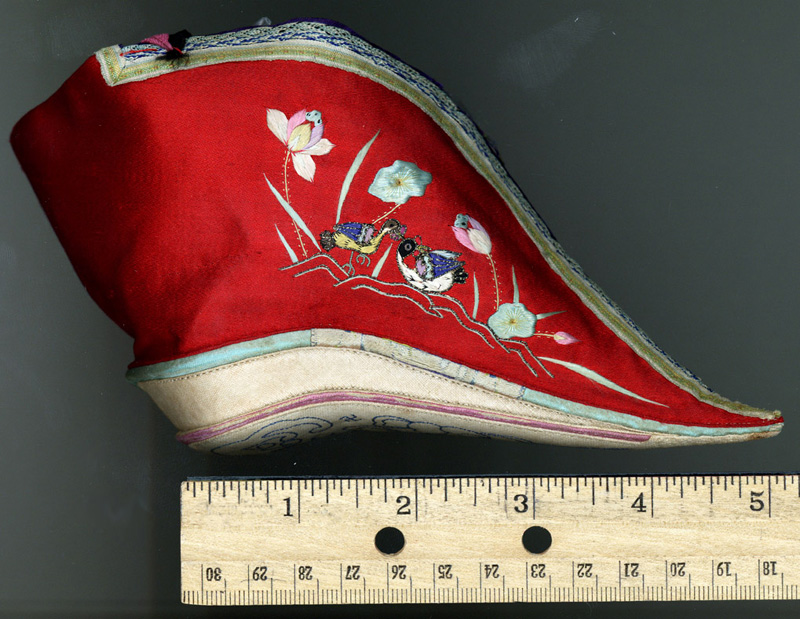
Source: Istmira
Foot binding is one of the most notorious fashion trends from any culture in any era. For over a millennium, Chinese families would repeatedly break and fold the feet of their infant daughters in order to increase her marriage eligibility and emphasize their wealth.
Back then, to bind a girl’s feet was to remove her from the workforce and all but require another to take care of her for the rest of her life. But beyond that, the men of China found small feet so intensely erotic that female foot-binding all but guaranteed that she would be married. It was also sort of revolutionary as it was one of the few avenues anywhere for a woman to exercise upward social mobility.

Source: Academic Dictionaries
That, however, was one of the few–if any–” uplifting” facets in the life of a woman with bound feet. The binding was so tight that often it would cut off circulation, resulting in gangrene. At the time, though, this was seen as fortuitous as gangrenous toes would eventually fall off and make the foot even smaller.
Life-threatening hazards aside, the practice remained effectively unquestioned until the late 19th century, when an unholy trinity of Christians, feminists, and social Darwinists combined their many varied objections to sway public opinion towards forbidding the practice. It was finally outlawed in 1949.
Cruel Women’s Fashion No. 6: Chopines
While platform shoes were some of the most extravagant fashion statements of disco, artificial lengtheners have been in and out of style since the Renaissance. Before high heels arrived on the scene, affluent women propped themselves up on wooden chopines. By the looks of it, the chopine was a beginner’s practice stilt, but in reality, they were strapped on to keep garments from getting muddy.
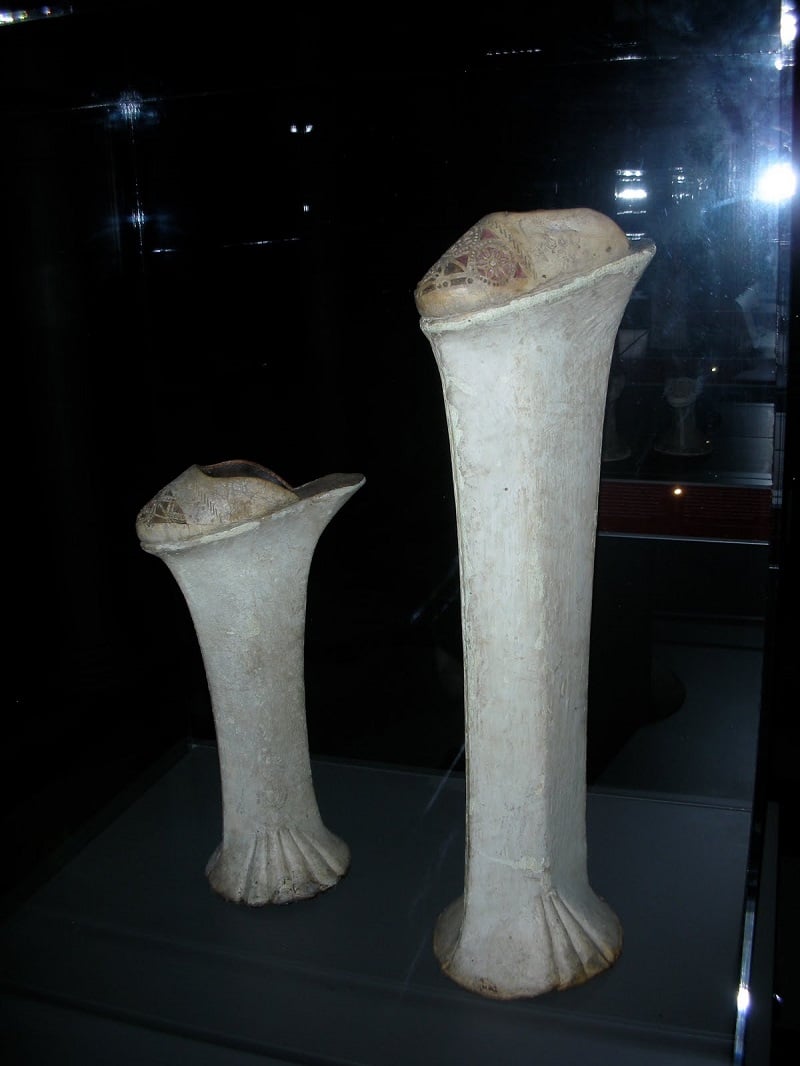
Source: Natty Style NYC
They first appeared as a fashionable shoe in Venice at a fairly modest size, and soon became a must-have item among affluent women. It wasn’t long before wealthier women had their chopines lengthened by whole feet to distance themselves from the dirt and highlight their elevated socioeconomic class. Chopines became decadently designed, adorned in silk and engraved with intricate patterns, as if literally propping oneself up a few feet above mere mortals were lacking in proper metaphor.
They were so identifiable a status symbol that Shakespeare even made reference to them in Hamlet, wherewith mocking praise the play’s protagonist uttered, “your ladyship is nearer to heaven than when I saw you last by the altitude of a chopine.”
As impractical as a three-foot platform shoe may seem and is, chopines remained popular throughout the Renaissance until a rejected man’s shoe, a regular flat with an elevated heel, offered the same social smugness without requiring the wearer to awkwardly stomp about.

